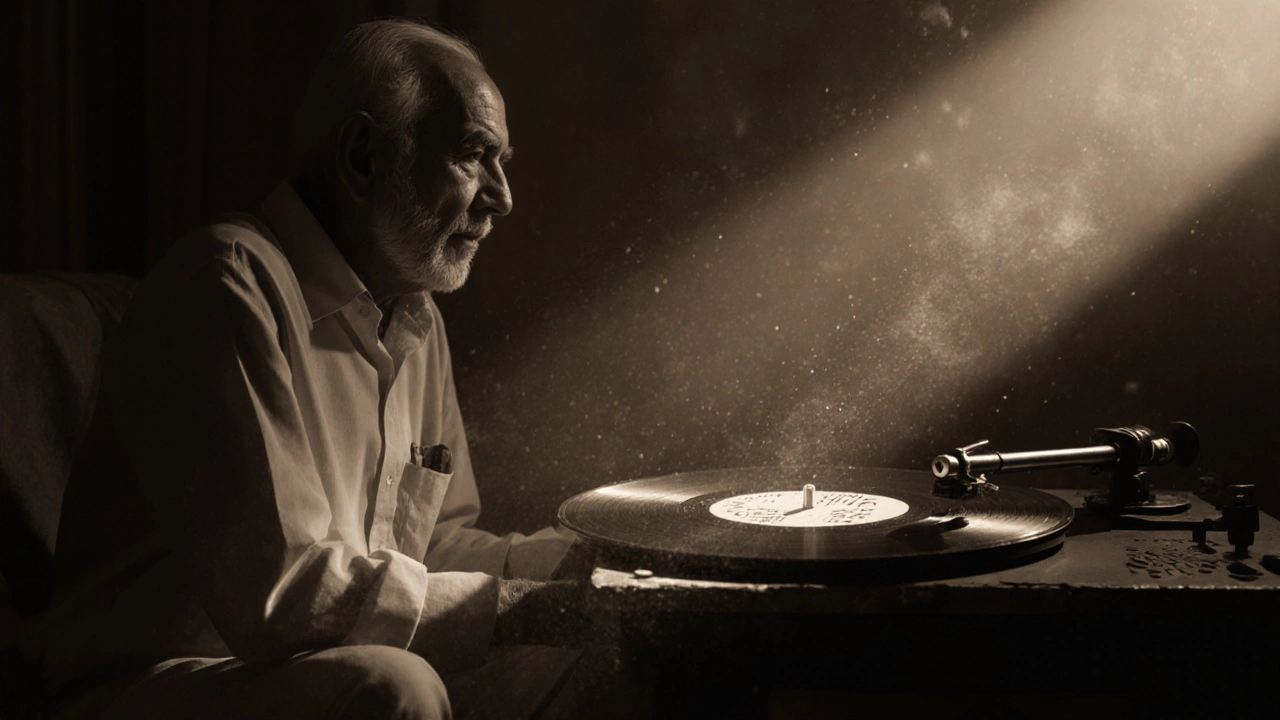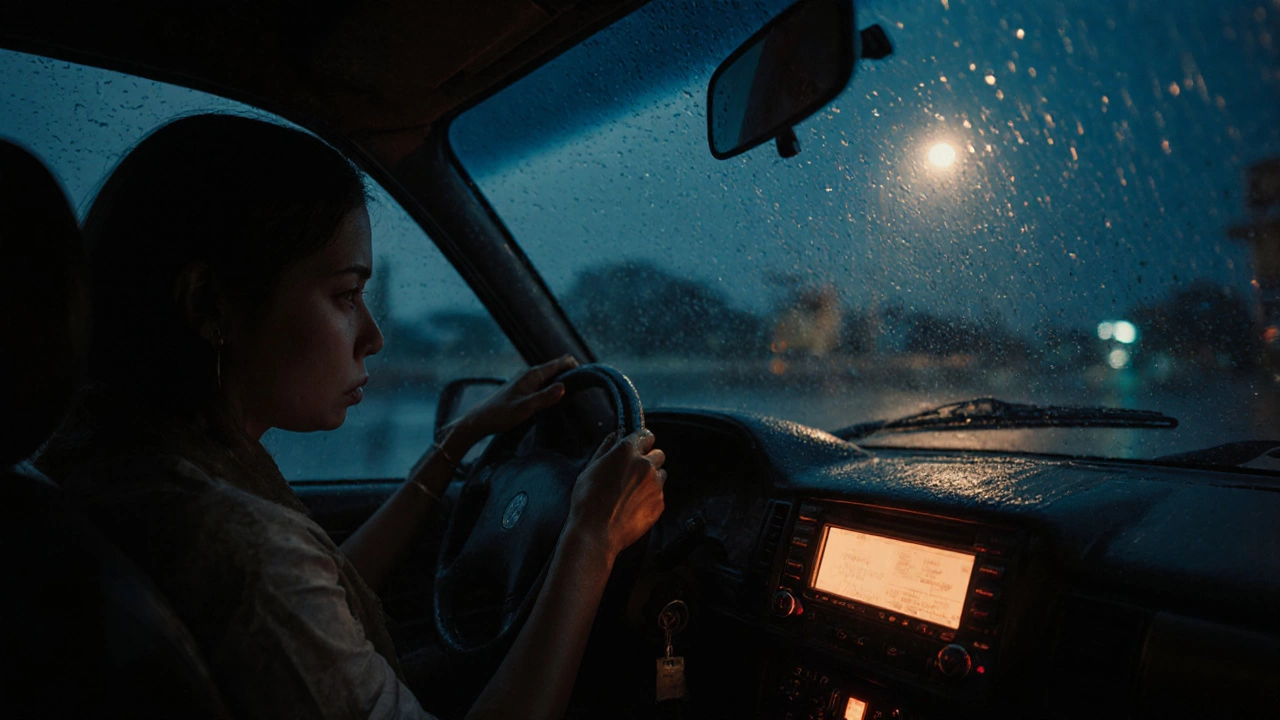There’s a reason you pause your car when that one song comes on the radio. Your eyes get wet. Your chest tightens. You don’t even need to know the words to feel it. In India, sadness doesn’t shout. It whispers through a sitar, lingers in a trembling voice, and settles into the silence between notes. Finding the best sad song in India isn’t about popularity or streams-it’s about the moment it stops being music and becomes memory.
Why Indian Sad Songs Hit Deeper
Western ballads often focus on lost love. Indian sad songs? They carry the weight of generations. A song like ‘Tujhse Naraz Nahi Zindagi’ from Masoom isn’t just about a child’s pain-it’s about silence between parents, unspoken guilt, and the quiet collapse of a family pretending to be whole. That’s the texture of Indian sorrow: layered, restrained, and deeply rooted in duty, loss, and unspoken longing.
Unlike pop songs that build to a chorus, many Indian sad songs unfold slowly. The melody doesn’t rush. It waits. The singer doesn’t scream. They hold back. That restraint? That’s what makes it hurt more. You feel the tears before they fall.
The Song That Still Haunts Millions
If you ask a thousand people in India which song broke them the most, one name comes up again and again: ‘Kabhi Kabhie Mere Dil Mein’ from the 1976 film Kabhi Kabhie. Sung by Mukesh and Lata Mangeshkar, composed by Khayyam, with lyrics by Sahir Ludhianvi, this isn’t just a love song. It’s a meditation on time slipping away.
The opening lines-"Kabhi kabhie mere dil mein khyal aata hai..."-are simple. But they don’t describe heartbreak. They describe the quiet realization that love, once lived, becomes a ghost. The orchestration is minimal: a piano, a flute, a soft tabla. No drums. No strings rushing in. Just space. And in that space, you hear your own regrets.
It’s not the most streamed sad song today. It doesn’t trend on TikTok. But if you play it in a room full of Indians over 40, you’ll see heads nod. Eyes lower. Someone will whisper, "Yeh toh sach mein dil ko chhoo jaata hai." (This truly touches the heart.)
What Makes a Sad Song Last
Not every melancholy tune becomes timeless. A song needs three things to stick:
- Lyrics that feel like your own thoughts-not poetic fluff, but lines you’ve whispered to yourself in the dark. Sahir Ludhianvi’s words in ‘Kabhi Kabhie’ don’t rhyme to impress. They rhyme to confess.
- A voice that sounds like it’s crying without crying-Mukesh’s tone is soft, worn, almost tired. He doesn’t belt. He exhales. That’s why it lands.
- A melody that doesn’t resolve-the song ends on a suspended chord. No final note. No closure. Just silence. That’s how real grief feels.
Compare this to modern Bollywood sad songs. Many rely on heavy strings, dramatic crescendos, and over-sung vocals. They’re engineered to make you cry. ‘Kabhi Kabhie’ doesn’t ask you to cry. It lets you sit with the ache until you realize you’ve been carrying it for years.

Other Sad Songs That Still Resonate
While ‘Kabhi Kabhie’ stands alone, a few others hold their own in the shadows:
- ‘Tujhse Naraz Nahi Zindagi’ (Masoom, 1983) - A father’s apology to his child, sung with heartbreaking simplicity by Kishore Kumar.
- ‘Chhod Do Aanchal’ (Chandni, 1989) - A woman’s quiet surrender to a love that never chose her.
- ‘Dil Hai Ki Manta Nahin’ (Hum Dono, 1961) - Not about loss, but about the fear of never being enough.
- ‘Aaj Jaane Ki Zid Na Karo’ (1967) - A man begging for one last moment, knowing it won’t change anything.
Each of these songs shares something rare: they don’t tell you how to feel. They just show you the space where your own sadness lives.
Why This Song Still Matters in 2025
Today, we scroll past grief. We post about it. We turn it into memes. But ‘Kabhi Kabhie Mere Dil Mein’ doesn’t fit that world. It doesn’t need likes. It doesn’t need a caption. It just needs silence.
When a young person in Delhi or Mumbai hears it for the first time-maybe on a rainy afternoon, alone in their room-they don’t hear an old song. They hear their own unspoken pain reflected back. That’s why it survives. Not because it’s old. But because it’s true.
Indian sad songs aren’t about drama. They’re about dignity in suffering. About holding your breath so no one notices you’re breaking. That’s why the best sad song in India isn’t the loudest. It’s the one that doesn’t need to be heard to be felt.

Where to Listen to These Songs
You won’t find ‘Kabhi Kabhie’ on the top playlists of Spotify or Apple Music. But if you dig deeper-into curated playlists like "Classic Bollywood Sadness" or "Sahir Ludhianvi’s Poetry in Music"-you’ll find it. Many older Indian families still play these songs on vinyl or cassette during monsoon evenings. It’s not nostalgia. It’s ritual.
Try listening with headphones. Close your eyes. Don’t search for the meaning. Let the music find you.
Why You Shouldn’t Just Search for "Best Sad Song"
The question "What is the best sad song in India?" assumes there’s one answer. But grief isn’t a ranking. It’s personal. The song that breaks you might be a folk tune from Rajasthan, a qawwali from Punjab, or a Bengali poem set to music. What matters isn’t the title-it’s the moment the music becomes your story.
So don’t look for the best. Look for the one that finds you when you’re not looking.
